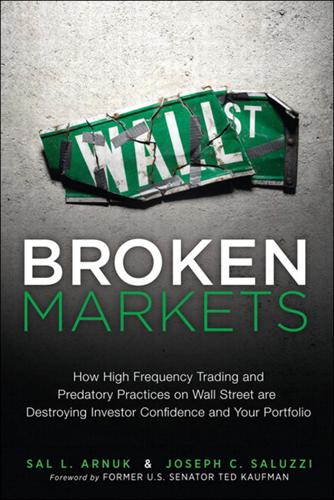
Broken Markets: How High Frequency Trading and Predatory Practices on Wall Street Are Destroying Investor Confidence and Your Portfolio
by
Sal Arnuk
and
Joseph Saluzzi
Published 21 May 2012
., 152 Levine, Josh, 51, 71, 104 Levitt, Arthur, 68, 71, 74, 86, 208 Liebowitz, Larry, 41 Liesman, Steve, 35, 189 liquidity HFT (high frequency trading), 186 NYSE (New York Stock Exchange), 209 liquidity demanders, 173 liquidity providers, 155 liquidity rebate traders, 235-236 liquidity vacuum, 28 Liquidnet, 129 Lo, Andrew, 108 locals, 157 low latency, NYSE (New York Stock Exchange), 99 LRPs (Liquidity Replenishment Points), NYSE (New York Stock Exchange), 281-282 Lupien, Bill, 128-129 Lyons, Richard, 185 M machine readable news, 121-123 Madoff, Bernie, 19, 71 Madoff Ponzi scheme, 153 Madoff Securities, 71 Major, 141-143 maker/taker model, 104-107, 259-263 elimination of, 228 Manaster, Steven, 185 Mann, Steven, 185 market access proposal, 78 market center inducements for high frequency traders, 238-239 market data proposal, 78 market data revenue, 268-269 market integrity, Latency Arbitrage, 251-252 market makers, 15 market structure and latency arbitrage, 30-32 market structure, complexity of, 148-150 Maschler, Sheldon, 51 McCaughan, Jim, 220 McNamee, Roger, 220 McTague, Jim, 40 “Measuring Arbitrage in Milliseconds,” 134 Milstream, 126 Momentum Ignition, 32-34 Morgan Stanley, 106-107, 261 MS Pool, 130 MS Pool, 130 Mutual Fund Investor Confidence Restoration Act, 32 mutual funds, 128 N Nanex, 181-182 Narang, Manoj, 41 NASDAQ, 49-50, 54 colocation, 100 flash orders, 59 hidden orders, 113-115, 117 ITCH, 103 price fixing, 208 problems for, 54-55 Totalview-ITCH product, 274-276 National Association of Securities Dealers, 156 National Association of Securities Dealers Automated Quotation system. See NASDAQ National Best Bid and Offer (NBBO), 14 NAVs (net asset values), 31 NBBO (National Best Bid and Offer), 14 NetCoalition, 268 “Next Generation” algos, 144 Niederauer, Duncan, 163 Nordson Corp, 134 Novellus Systems (NVLS), 114 NYSE (New York Stock Exchange), 77 colocation, 99-100 history of, 10 liquidity, 209 LRPs (Liquidity Replenishment Points), 281-282 problems for, 54-55 regionals, 48 Rule 390, 71 NYSE Technologies, 98-99 O odd-eight quotes, 67 Optimark, 128-129 order cancellation fees, 228-229 Order Handling Rules, 68-69 owners of data, 123-124 P Pacific Stock Exchange, 48 parallel stock markets, 213-214 Patterson, Scott, 134, 164 payment of order flow (PFOF), 58 penny tick size, 212-213 penny-jumping, 45-46 percentage of volume.
…
The result was the Regulation National Market System, otherwise known as Reg NMS, which was authored by many industry participants in collaboration with the SEC. Proposed in late 2004, Reg NMS was supposed to serve as the framework for the evolving stock markets for the coming century. Due to delays, lobbying, industry comment letters, and reworking, it wasn’t implemented until late 2007. Reg NMS created the concept of a National Best Bid and Offer (NBBO). The NBBO was an aggregation of the best priced orders on all exchanges and ECNs, and it was protected. This meant that if one market center, say the NYSE, had a participant with an order to buy stock at $10.00 and did not have a matching sell order at $10.00, while another exchange, say NASDAQ, did, then the NYSE would have to route out that buy order to NASDAQ, which would then match the buy and sell order.
…
These exchanges also are responsible for maintaining the publicly available stock quotes, commonly called the Security Information Processor (SIP). This is the quote that most investors see when they look at their data terminals, or if they watch quotes stream on their online broker’s website. It is also the speed that the national best bid and offer (NBBO) updates for most dark pools, although not all. (Dark pools contain trading that is not generally available to the public: the orders and quotes in them are not visible like an exchange’s quotes are.) The SIP speed is slower than the speed of the exchanges’ direct data feeds, which are sold to collocating HFT firms so they can act on the data faster than anybody else.
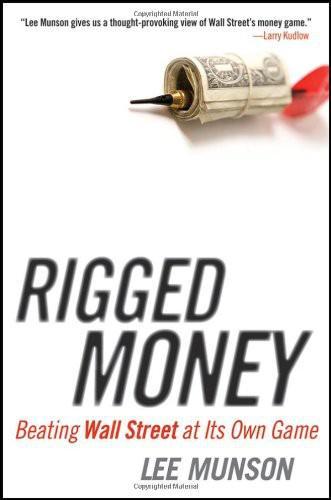
Rigged Money: Beating Wall Street at Its Own Game
by
Lee Munson
Published 6 Dec 2011
In other words, in the end the volume is reported, but you can’t tell what ATS executed which trade. While ATSs don’t display real-time prices and size publicly, which makes them dark, they derive their pricing from the national best bid and offer (NBBO). All trades have to occur inside or at the NBBO price. Don’t forget that ATSs are highly regulated by the SEC. national best bid and offer (NBBO) A requirement by the SEC that requires brokers to execute trades at the best buy or sell price. It is also the quote that most people see when looking up a stock price. This is the best buy and sell price offered publicly.
…
See Market Participation Identifier MPT. See Modern Portfolio Theory MSA. See Master Settlement Agreement mutual fund Mutual Fund MarketPlace N NASD. See National Association of Securities Dealers NASDAQ 100 ETF National Association of Securities Dealers (NASD) national best bid and offer (NBBO) NBBO. See national best bid and offer New York Stock Exchange Regulation (NYSE Regulation) no-transaction-fee funds (NTFs) noise non-correlated assets A Non-Random Walk Down Wall Street NTFs. See no-transaction-fee funds NYSE Regulation. See New York Stock Exchange Regulation O OER. See operating expense ratio OneSourse Select List operating cost operating expense ratio (OER) opinion, strong OPRA.
…
Who pays for this? Professional traders. Each month my hedge fund writes a check to several different tape services. If you want to trade, you have to pay for the infrastructure. Part of the evolution of electronic trading is ensuring these lightning-fast trades are executed at what the SEC calls the National Best Bid and Offer. NBBO is a calculation, not an organization. Consolidated Tape Association (CTA), Consolidated Quotation System (CQS), Options Price Reporting Authority (OPRA), and Over-the-Counter (OTC) are all organizations that provide consolidated tape for stocks and options. Without them, there would be no central depository of price information.
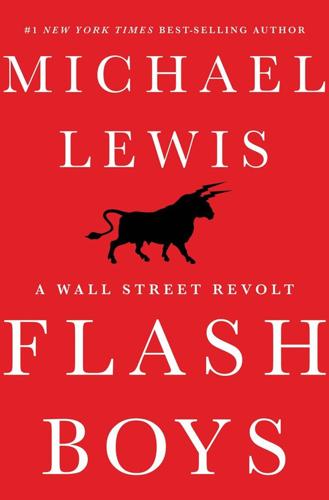
Flash Boys: A Wall Street Revolt
by
Michael Lewis
Published 30 Mar 2014
He had the discretion not to spook the market, and to play your hand on your behalf as smartly as he could. After the brokers abused the trust implicit in that discretion once too often, the government took the discretion away. Reg NMS replaced the loose notion of best execution with the tight legal one of “best price.” To define best price, Reg NMS relied on the concept of the National Best Bid and Offer, known as the NBBO. If an investor wished to buy 10,000 shares of Microsoft, and 100 shares were offered on the BATS exchange at $30 a share, while the full 10,000 listed on the other twelve exchanges were offered at $30.01, his broker was required to purchase the 100 shares on Bats at $30 before moving on to the other exchanges.
…
The regulation also made it far easier for high-frequency traders to predict where brokers would send their customers’ orders, as they must send them first to the exchange that offered the best market price. That would have been fine but for the manner in which the best market price was calculated. The new law required a mechanism for taking the measure of the entire market—for creating the National Best Bid and Offer—by compiling all the bids and offers for all U.S. stocks in one place. That place, inside some computer, was called the Securities Information Processor, which, because there is no such thing on Wall Street as too many acronyms, became known as the SIP. The thirteen stock markets piped their prices into the SIP, and the SIP calculated the NBBO.
…
Three weeks later, a Nasdaq employee clicked the wrong icon on his computer screen and stopped the public offering of shares in a company called WhiteHorse Finance. In early January 2013, BATS announced that, because of some unspecified computer error, it had, since 2008, inadvertently allowed trades to occur, illegally, at prices worse (for the investor) than the National Best Bid and Offer. That was just a sampling from a single year of what were usually described as “technical glitches” in the new, automated U.S. stock markets: Collectively, they had experienced twice as many outages in the two years after the flash crash as in the previous ten. The technical glitches were accompanied by equally bewildering irregularities in stock prices.
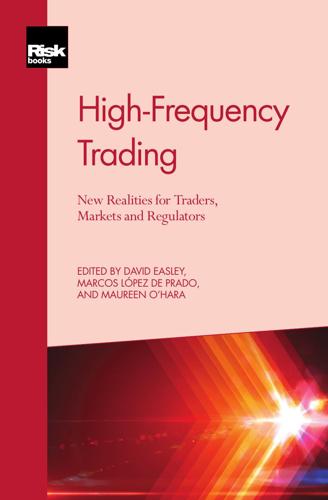
High-Frequency Trading
by
David Easley
,
Marcos López de Prado
and
Maureen O'Hara
Published 28 Sep 2013
Reg NMS was wildly successful at this, as the market structure of 13 equity exchanges and 40 or more alternative venues (dark pools, dealer desks, etc) attests. Cohesion was supposedly ensured in the US through a mechanism for the consolidation of individual orders processed via multiple venues (the “National Best Bid and Offer” (NBBO)).1 These changes, combined with decimalisation of equity markets, resulted in an “arms race” to develop the technology and quantitative methods that could extract the last cent of profitability from trading while serving the demands of market participants. The high-frequency strategies that developed are actually very diverse.
…
At what prices do the executions take place, since orders do not specify prices? As per the aforementioned motivation of liquidity over price (improvement), in general dark pool executions take place at the prevailing prices in the corresponding lit (limit order) market for the stock in question, eg, at the midpoint of the bid–ask spread, as measured by the National Best Bid and Offer (NBBO). Thus, while dark pools operate separately and independently of the lit markets, their prices are strongly tied to those lit markets. From a data and machine learning perspective, there are two crucial differences between dark pools and their lit market counterparts. (i) Unlike the microstructure data for the lit markets, in dark pools we have access only to our own order and execution data, rather than the entire trading population.
…
Similarly, Reg NMS encourages competitiveness among exchanges by allowing market fragmentation. Cohesion across markets is recovered through a mechanism for the consolidation of individual orders processed in multiple venues into a single best bid or offer price for the market as a whole (the National Best Bid and Offer (NBBO)). Since the arrival of trading in multiple markets, an “arms race” has developed for the technology and quantitative methods that can squeeze out the last cent of profitability when serving the demands of market participants, hence the advent of high-frequency trading. Easley et al (2011a) have argued that these changes are related to a number of new trends in market microstructure.

The Crisis of Crowding: Quant Copycats, Ugly Models, and the New Crash Normal
by
Ludwig B. Chincarini
Published 29 Jul 2012
They never report the buyer or seller’s identity.5 Broker-dealers can route customer orders to the marketplace or internalize orders, using their own capital to settle customer trades. This is often more efficient and saves transaction costs. Broker-dealers must also report internalized trades to the consolidated tape. Stock exchange laws say that all trades must be executed at the national best bid and offer at the time of execution. This is true for exchanges, ECNs, dark pools, and broker-dealers. New technologies and interconnected trading systems have made trading much faster. Despite the high speeds and information flow, flash crashes have happened before. On May 3, 1906, and August 9, 1919, for instance, stock prices changed dramatically, then recovered.6 The modern trading system had some flashes as early as April 28, 2010.
…
A limit order is a stock order that includes the number of shares a trader would like to buy or sell at a given stock price or better. In a buy limit order at $12 per share, the order is only executed at a price of $12 or less. Otherwise, it isn’t executed at all. 11. This is known as the NBBO, or the national best bid and offer. A market maker is willing to buy the stock at $10 and another market maker will sell the stock at $10.02. The spread is compensation for the risk market makers take in providing liquidity. 12. Jim Angel, a professor at Georgetown University, used these terms in our conversations about trading. 13.
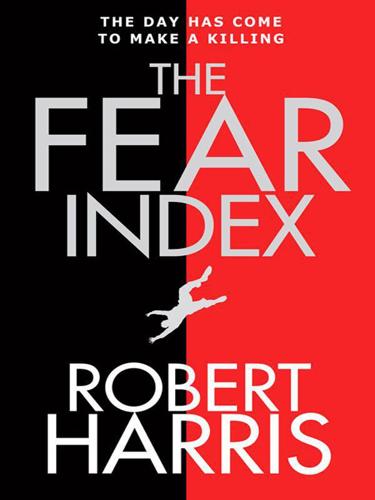
The Fear Index
by
Robert Harris
Published 14 Aug 2011
The system is entirely automated and operates at a speed of thousandths of a second. To a professional such as Hoffmann, the CBOE Self Help alert gave warning that the New York electronic exchange ARCA was experiencing some kind of system breakdown – an interruption sufficiently serious that Chicago would no longer re-route orders to it under the National Best Bid and Offer (NBBO) regulations, even if it was offering better prices for investors than Chicago. The announcement had two immediate consequences. It meant Chicago had to step in and provide the liquidity formerly offered by NYSE/ARCA – at a time when liquidity was, in any case, in short supply – and it also, perhaps more importantly, further spooked an already jittery market.
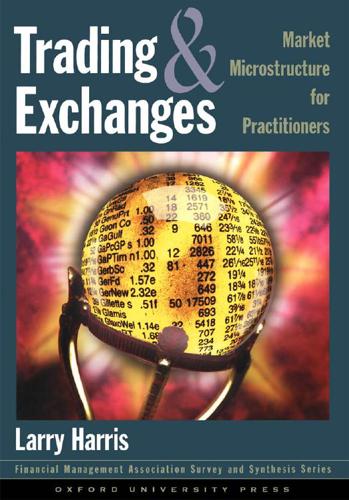
Trading and Exchanges: Market Microstructure for Practitioners
by
Larry Harris
Published 2 Jan 2003
Traders also call them the market bid and the market offer (or market ask) because they are the best prices available in the market. A market quotation reports the best bid and best offer in a market. A market quotation is often called the BBO, which is the acronym for Best Bid and Offer. Many markets continuously publicize their market quotations. The best bid and offer anywhere in the United States is the NBBO—National Best Bid and Offer. The difference between the best ask and the best bid is the bid/ask spread. Traders sometimes call it the inside spread because the space between the highest bid price and the lowest ask price is inside the market. The English often refer to the spread as the touch. In sports betting markets, bettors and bookies call it the vigorish.
…
See National Association of Securities Dealers Nasdaq Stock Market bubble, 569–70 demutualization, 35 as hybrid market, 96, 532 institutional stock trade, 19–20 levels of quotation, 105 Microsoft’s listing, 547 and October 1987 crash, 563 options market, 52 OTC Bulletin Board, 107, 108 as quote-driven market, 93 retail stock trade, 14–15 Small Order Execution System, 14–15, 106, 391, 532 stocks, 48, 49 trading hours, 92 and volatility, 511 volume figures, 48 National Association of Securities Dealers (NASD), 11, 64, 164 National Futures Association (NFA), 64, 164, 474 National Quotation Bureau, 107, 108 National Securities Clearing Corporation (NSCC), 28, 35, 36, 37, 522 natural hedgers, 183 NBBO (national best bid and offer), 70 negative externalities, 7 net buyers, 270 net price basis, 144, 281 net sellers, 270 net settlement, 36 network externality, 145, 535–36 new issues, 39 news traders, 194, 196, 228–30, 231, 235, 239, 243 New York Board of Trade (NYBOT), 55 New York Mercantile Exchange (NYMEX) contract volumes, 55 floor-based trading, 543 variation margin example, 42 New York Stock Exchange (NYSE) After-hours Trading Session I, 132, 133 as “Big Board,” 107 block trades, 323 bond market, 54 Exchange Stock Portfolio, 490 floor-based trading, 48, 543, 544 generally accepted accounting principles, 314 history of, 64 as hybrid market, 96, 532 institutional stock trade, 15–19 listed stocks, 48 market-not-held orders, 530 options market, 52 program trades, 489 quantitative listing standards for domestic companies, 46 retail stock trade, 11–14 Rule 80A, 577, 580–81 Rule 80B, 573, 578 specialists, 298, 494, 495, 496, 500, 510 SuperDot order-routing system, 13, 106, 489, 562 trading hours, 92 NFA.